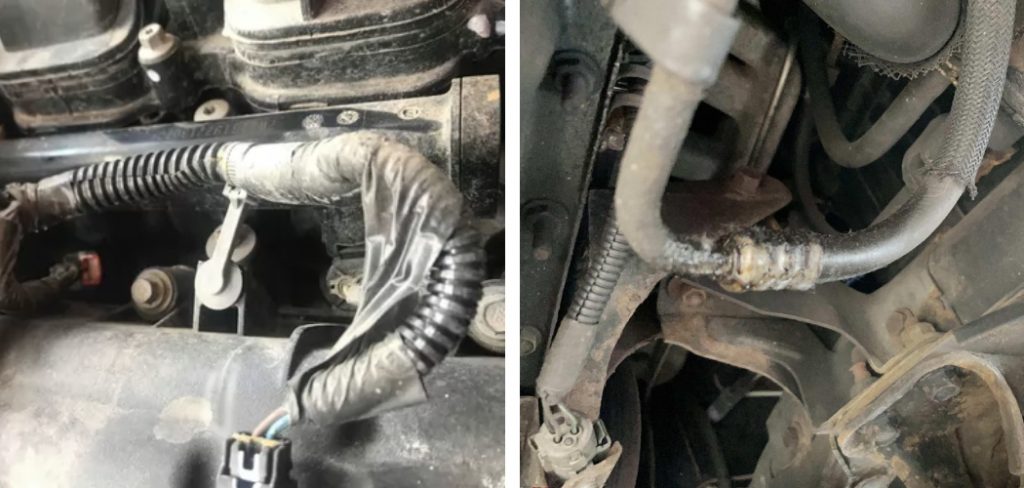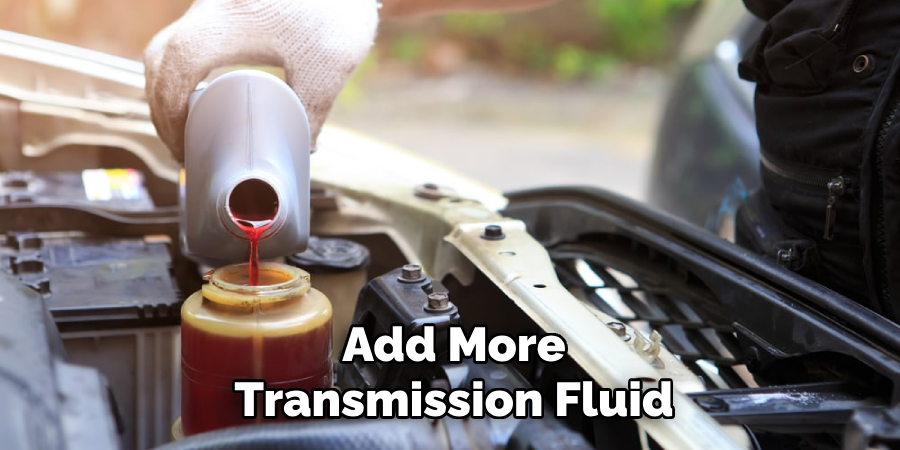Maintaining your Jeep Cherokee’s transmission fluid is one of the most important steps you can take to keep your vehicle running smoothly. Yet checking the transmission fluid level is often overlooked, and many Cherokee owners aren’t even sure how to perform this simple check. If your transmission fluid gets too low, it can cause serious damage that will require costly repairs.

That’s why I’m sharing my step-by-step guide to checking the transmission fluid level in your Jeep Cherokee. Following these easy steps on how to check transmission fluid in jeep cherokee can help avoid transmission issues down the road. So let me walk you through the process and give you peace of mind that this critical component is well cared for. Read on to learn just how straightforward it is to inspect your Cherokee’s transmission fluid yourself.
Why Should You Check Your Transmission Fluid?
Before we dive into the steps on how to check transmission fluid in Jeep Cherokee, it’s important to understand why this maintenance task is so crucial. The transmission fluid serves as a lubricant, coolant, and cleaning agent for the various moving parts inside your vehicle’s transmission.
Over time, the fluid can become dirty or low due to normal wear and tear. If the fluid levels get too low, it can lead to costly damage to your transmission. Regularly checking and changing the transmission fluid can help prolong the lifespan of your vehicle’s transmission and prevent expensive repairs.
11 Step-by-step Guides on How to Check Transmission Fluid in Jeep Cherokee
Step 1: Park Your Jeep
To get an accurate reading, your Cherokee needs to be on a level surface. Find a safe, flat are to park your vehicle and turn off the engine. You should also engage the parking brake to prevent any accidents. But do not engage the parking brake if your Jeep has an electronic parking brake feature. If you have an electronic parking brake, consult your owner’s manual for instructions on how to disengage it.
Step 2: Locate the Transmission Dipstick

The transmission dipstick is typically located near the back of your engine, on the passenger side. It is often labeled with a red or yellow handle for easy identification. If you’re having trouble finding it, check your owner’s manual for its exact location. This is also a good time to make sure you have the correct type of transmission fluid for your Cherokee. You can find this information in your owner’s manual as well.
Step 3: Wipe Off The Dipstick
To get an accurate reading, it’s important to clean off the dipstick before inserting it back into the tube. Use a clean cloth or paper towel to wipe off any existing fluid or debris from the dipstick. But do not use a dirty cloth or towel as this may contaminate the fluid.
You want to check the color and consistency of the fluid, so cleaning off the dipstick is a crucial step. We recommend wearing gloves to protect your hands from any potential mess.
Step 4: Insert The Dipstick
Once the dipstick is clean, reinsert it back into the tube. Push it all the way in until it is fully seated. It’s essential to insert the dipstick correctly to get an accurate reading. The O-ring on the dipstick should be in contact with the tube’s bottom, and the handle should be facing outward. It’s also important to make sure the dipstick is inserted straight and not at an angle. You should feel a slight resistance when inserting the dipstick.
Step 5: Remove The Dipstick
Remove the dipstick once more and take note of the fluid level on both sides of the stick. Most Cherokee models have a “full” and “low” indicator marked on the dipstick. If your vehicle does not have these indicators, you can use the top of the dipstick as a reference point. The fluid level should be between the two marks or at the top of the stick.

Step 6: Check The Color
Now that you’ve checked the fluid levels, take note of its color. New transmission fluid is usually pink, red, or clear in color. If you notice that your fluid is dark brown or black, it’s time to change your transmission fluid. This is a sign that the fluid needs to be replaced due to contamination and wear.
You should also look for any signs of metal particles or debris in the fluid, which could indicate internal damage to your transmission. It’s also essential to check the fluid consistency; it should be smooth and free of any lumps or particles.
Step 7: Check The Consistency
Along with the color, you should also check the consistency of your transmission fluid. New fluid is usually smooth and slippery, while old or dirty fluid may feel gritty or thick. If your fluid does not feel smooth, it’s time for a transmission fluid change. Although some slight discoloration is normal, any significant changes in texture could be a sign of internal damage. It’s best to consult a professional mechanic in this case.
Step 8: Wipe Off The Dipstick Again
After noting the fluid level, color, and consistency, wipe off the dipstick one more time. Make sure to clean off any debris or particles that may have stuck to the stick while you were checking the fluid level. Again, using a clean cloth or paper towel is essential to prevent any contamination. If you’re unsure about the cleanliness of your dipstick, it’s best to use a new one.
Step 9: Reinsert The Dipstick
Insert the dipstick back into the tube and make sure it is fully seated. Double-check that the O-ring is in contact with the bottom of the tube and that the dipstick is straight. You want to get an accurate reading, so it’s crucial to ensure that the dipstick is inserted correctly. But be careful not to push it in too hard, as this could affect the fluid level reading. You should feel a slight resistance when inserting the dipstick.
Step 10: Check The Level Again

Remove the dipstick once more and check the fluid level. If the level is still low, you may need to add more transmission fluid. Remember to use the correct type and amount of fluid recommended by your owner’s manual. Slowly pour the fluid into the dipstick tube, using a funnel if necessary, until the level reaches the “full” mark.
Step 11: Replace The Dipstick
Once you’ve reached the desired fluid level, wipe off any excess fluid from the dipstick, and insert it back into the tube. Make sure it is fully seated, and you’re done! You’ve successfully checked the transmission fluid levels in your Jeep Cherokee. You should aim to check your transmission fluid every 30,000 miles or so and change it every 60,000 miles.
Regularly checking and changing your transmission fluid can help prevent costly repairs and prolong the lifespan of your vehicle’s transmission. So be sure to follow these steps on how to check transmission fluid in jeep cherokee to keep your Jeep Cherokee running smoothly for years to come!
Additional Tips
- It’s Recommended to Check Your Transmission Fluid Levels Every Time You Get an Oil Change or at Least Once a Year.
- If You Notice Any Significant Changes in Color or Consistency, It’s Best to Get Your Transmission Inspected by a Professional Mechanic.
- Always Use the Correct Type of Transmission Fluid for Your Specific Model of Jeep Cherokee.
- If You’re Unsure About Any Steps, Refer to Your Owner’s Manual for More Detailed Instructions. Remember to Be Safe and Take Necessary Precautions When Working Around Your Vehicle.
- Regular Maintenance of Your Vehicle, Including Checking and Changing Transmission Fluid, Can Help Keep Your Jeep Cherokee Running Smoothly for Years to Come! So Don’t Skip Out on This Important Task. Happy Driving!

Conclusion
In conclusion on how to check transmission fluid in jeep cherokee, keeping an eye on your Jeep Cherokee’s transmission fluid is crucial for maintaining the health and longevity of your vehicle. By following the simple steps outlined in this post, you can easily check the state of your transmission fluid and take immediate action if necessary.
Remember, prevention is always better than cure when it comes to car maintenance. Don’t wait for your transmission to malfunction before checking on its fluid levels. Take a proactive approach and make it a regular part of your vehicle maintenance routine.
With proper care and attention, you can extend the life of your transmission and save yourself from potential expensive repairs in the long run. So go ahead and grab that dipstick; your Jeep Cherokee will thank you for it! Also, don’t forget to check out other posts on our blog for more useful tips and tricks to keep your car running smoothly. Happy Jeeping!

About
JeepFixes Team is a skilled author for Jeep Fixes, bringing 6 years of expertise in crafting a wide range of jeep fixes. With a strong background in jeep fixes work, JeepFixes Team’s knowledge spans various types of fixtures, from decorative pieces to functional hardware, blending precision with creativity. His passion for jeep fixes and design has made him a trusted resource in the industry.
Professional Focus:
Expert in Jeep Fixes : JeepFixes Team aesthetic specializes in creating durable and innovative jeep fixes, offering both appeal and functionality. His work reflects a deep understanding of jeep fixes techniques and materials.
Sustainability Advocate : He is dedicated to using sustainable practices, ensuring that every fixture is crafted with eco-friendly methods while maintaining high-quality standards.
In his writing for jeep fixes, JeepFixes Team provides valuable insights into the latest trends, techniques, and practical advice for those passionate about jeep fixes, whether they are professionals or DIY enthusiasts. His focus on combining artistry with engineering helps others discover the true potential of jeep in design.
